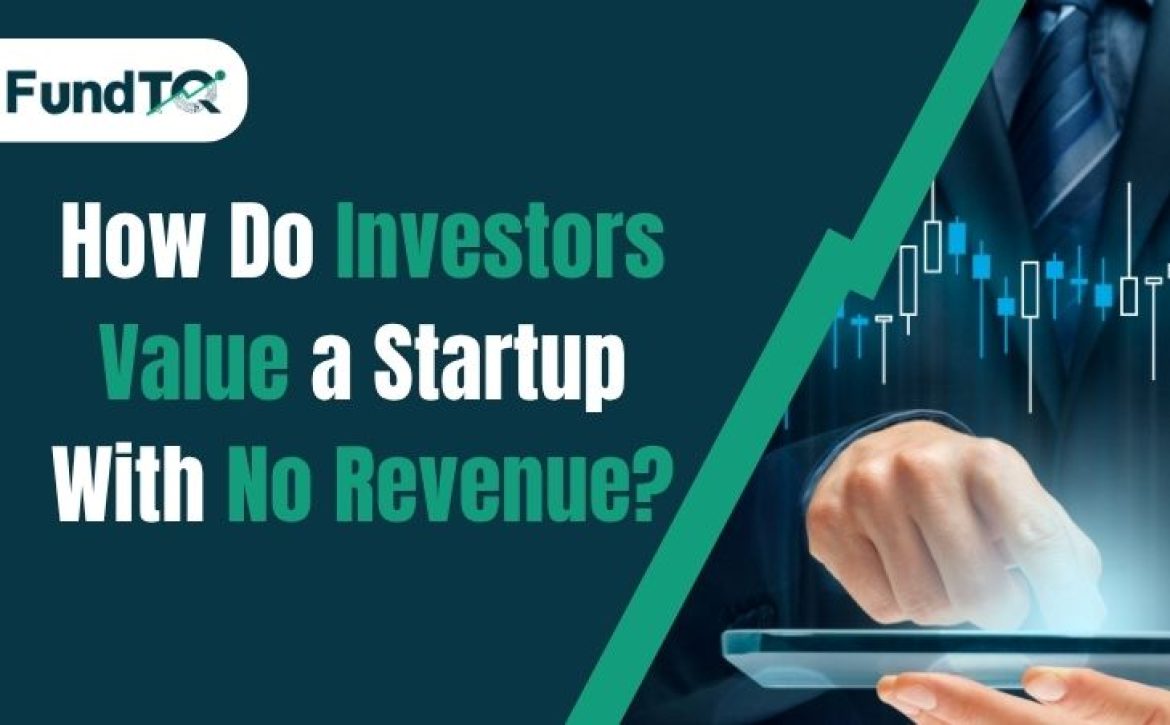Can I Get a Free Business Valuation Report Online?
Understanding the financial worth of a business is crucial in scenarios such as fundraising, planning equity distribution, or preparing for mergers and acquisitions. One of the most convenient ways to access this data today is through a business valuation report online. Although traditionally, valuations were achieved by contracting financial consultants, they are currently becoming available in the form of free digital tools, all of which can make the valuations accessible to early-stage founders and small businesses.
This article explores what a business valuation report is, how free tools like FundTQ – Asia’s Leading startup valuation calculator work, and how these insights can attract investors, prepare pitch decks, and raise funds confidently.
What Is a Business Valuation Report?
A business valuation report is a document created professionally to represent the estimated financial worth of a company. It not only gives the business valuation in a monetary value, but it also details the methodologies, assumptions, and growth projections used in the calculation.
It is commonly required during:
- Fundraising for startups in India or abroad
- Discussions with investment banking services
- Equity sharing between co-founders or workers
- Strategic plans regarding expansion or exit
- The use of regulations or taxation
In most valuation reports, methods such as discounted cash flow (DCF), comparables, revenue multiples, or post-money valuation models are applied. The output is presented as an estimated value range, supported by assumptions and benchmarks.
Can a Business Valuation Report Be Obtained for Free?
Yes, free valuation tools are being offered by various fintech and startup-support platforms. These reports are auto-generated using sophisticated calculators as opposed to being prepared manually. The founders should not include any other details besides the bare minimum, such as revenue, growth rate, and market potential. Based on this little information, a valuation report can be created on the fly.
The estimate provided by a tool might not provide as accurate a result as the one that can be created by professionals, but such reports are regarded to be equally accurate during decision-making at earlier stages, preliminary negotiations with investors, and long-term planning
Startup valuation without revenue can also be performed using model-based logic built into such platforms.
Previously, valuations were typically conducted by professionals, with fees ranging between ₹50,000 and ₹2 lakh. However, with the emergence of these tools, even startups without current revenue can be valued using qualitative models such as the Berkus method, which assigns value to ideas, teams, and traction, the Scorecard method, which compares startups to industry averages, or quantitative techniques like the Discounted Cash Flow (DCF) model, which calculates value based on projected future cash flows.
Best Free Business Valuation Software
1. FundTQ – Asia’s Leading Startup Valuation Calculator
FundTQ has been recognized for providing one of the most detailed and startup-friendly business valuation reports online. Currently trusted by over 25,000 early-stage founders, the platform has been streamlined to be used by the Indian and Southeast Asian pre-revenue and early-revenue startups.
Key Features:
- AI has enhanced valuation
- Models of a given type of startups are applied (D2C, SaaS, marketplace, etc.)
- Reports are available in a PDF exportable format
- Post-money valuation insights are included
- Specific industry-based benchmarks are offered
In addition to valuation, the tool has been integrated with fundraising checklists, pitch templates, and investor readiness assessments. It is especially relevant for those pursuing fundraising for startups or engaging in startup fundraising in gurugram, Bengaluru, or Mumbai.
2. Equidam
A global tool in which the valuation is computed by five blended methods. Although it has a free version that provides basic data, complete reports can be bought.
3. StartupValuation.io
A lightweight calculator that makes an approximate estimate based on the input reasoning. Simple assumptions are utilised, but no breakdowns on the details are given.
What Can Be Expected in a Free Business Valuation Report?
Based on a free valuation tool, as a founder, you will be issued with a document that contains:
- Estimated Business Value
A range of values can be determined (e.g.,₹1.8–2.4 crore) on the basis of moving inputs like revenue, expense, and market.
- Industry Benchmarks
The data in terms of sector is compared so that you understand the place of your startup in terms of growth, margins, and capital requirements.
- Explanation of the Valuation Model Used
Information regarding whether the calculation was made using a DCF, Scorecard, Berkus or multiple-based model.
- Assumptions and Inputs Summary
Such aspects as revenue growth, CAC/LTV ratio, operating margin, and cash runway are also clearly provided.
- Fundraising Impact
If funding is being planned, post-money valuation figures are included to show expected dilution and valuation after fundraising.
How Should Free Valuation Tools Be Utilized?
Free valuation tools are very effective; however, their effective utilization comes when they are implemented strategically. The following is how the maximum value can be obtained:
1. Investor Discussions Should Be Initiated Using the Report
The report can be attached to your pitch deck or included as part of your outreach to top venture capital firms.
2. Updates Should Be Made Frequently
It is suggested that every 30 to 45 days, the report should be regenerated because startups quickly react to market encounters.
3. Competitor Analysis Should Be Conducted
The report offers benchmarks that should be contrasted with other startups in your industry.
4. Report Data Should Be Aligned with Pitch Deck Slides
Valuation assumptions and revenue projections should be on the same line as those in the deck to be credible.
When these actions are taken, valuation becomes a growth tool rather than just a financial figure.
Free Pitch Deck Templates to Enhance Fundraising
In addition to the valuation report, a number of tools provide free resources to help startups raise funds. At FundTQ, founders get a series of high-conversion pitch deck templates offered very freely.
Templates Are Designed To:
- Align your messaging with valuation insights
- Highlight traction and projections clearly
- Avoid common pitch deck mistakes
- Meet investor expectations for fundraising for startups in India
Included Templates (available on FundTQ.com):
- Investor Pitch
- B2B SaaS Fundraising Deck
- D2C Pitch Template
- One-Page Teaser
- Presentation of a Growth-Stage Startup
- Excel Financial Forecasting Template
- Problem–Solution–Market–Model Slide Kit
These templates are being widely used by those preparing for startup fundraising in Gurugram and other metro ecosystems.
Conclusion :
Ready to get your free business valuation report? Start now with FundTQ and explore pitch deck templates to supercharge your fundraising
These reports:
- Assistance in finding a start-up worth
- Provide realistic expectations for fundraising for startups
- Cut the cost of using costly consultants
- Bring in transparency amongst founders and investors
To get professional assistance, larger rounds of funding or a due diligence event must be enlisted. However, in the case of early-stage ventures, business valuation report online are a decent place to start, and combined with the startup valuation calculator tools, such as FundTQ.
Key takeaways:
1. Business Valuation Report online is a strategic tool for startups and SMEs by providing information on the projected market value, potential funding prospects as well as investor preparedness, at an early stage of operation without incurring expenses on paid consultancy. Free business valuation tool, such as FundTQ – Asia’s Leading startup valuation calculator, allow entrepreneurs to generate professionally structured valuation reports based on proven methodologies like DCF, VC method, and revenue multiples.
2. These free reports normally have:
- Approximate business value (pre-money valuation/post-money valuation),
- Industry benchmarks,
- Financial assumptions
- Model explanations are used for calculation.
- These free tools help to establish a valid basis of pitching, financial planning, and strategic decision-making, although, needless to say, they cannot be taken as a replacement for a large-scale due diligence or professional audit.
3. The other resource that FundTQ provides is free pitch deck templates, which can assist founders in aligning their valuation story with what investors expect, as well as help streamline fundraising paperwork.
4. Even startups that are at pre-revenue or idea stage can apply these tools to provide indicative valuations by concentrating on market size, innovation, and founder profiles so that they can raise funds even before they necessarily have any traction.
5. When used alongside resources like the fundraising checklist access to top venture capital firms, and localized support such as Startup fundraising in Gurugram, the free valuation report, becomes a powerful launchpad for early capital.
6. Free valuation reports are considered the best recommendation to the founders looking to start their journey into Indian and overall global capital systems, providing them not only with some proper organization of insights alongside visibility but also validation at zero cost.
FAQs
1.Is a free valuation report as good as a paid one?
They are fairly trustworthy in the preliminary planning. Such ascertained tools as FundTQ employ an approved startup valuation process to provide realistic figures.
2. Can a valuation report be used when meeting investors?
Yes. Many founders share their valuation reports in pitch meetings or emails to showcase credibility and preparation
3. Do these tools work for companies that do not generate revenue, yet?
Yes. Models like Berkus or Scorecard allow startup valuation without revenue using qualitative and projected factors.
4. Do these tools need the contribution of an expert?
No. The majority of the platforms do not require a financial knowledge base to use them by founders.
5. Does such a tool have pitch support or templates?
Yes. Platforms like FundTQ also offer fundraising checklists, pitch decks,business valuation report online, and advisory resources tailored for early-stage ventures.










